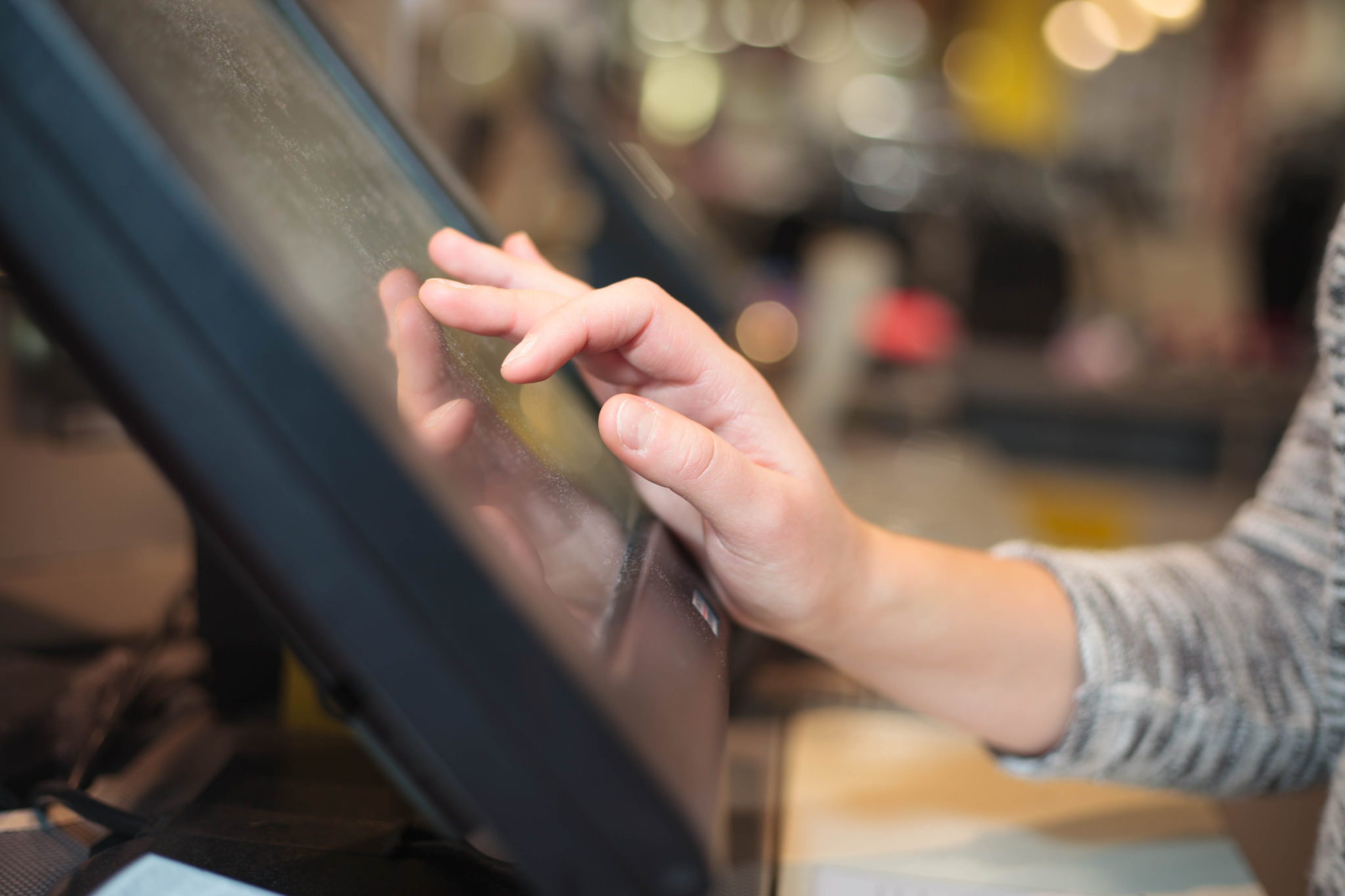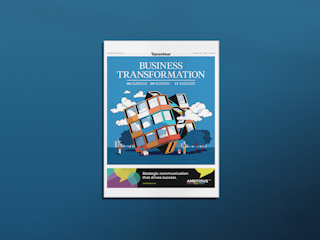março 06, 2019
“Macy’s and Sears Holdings to close a combined 226 stores” “Is There Any Saving Macy’s?” “On the heels of Macy’s and Sears, another major department store announces it will close locations in 2017”
The headlines are dire. Retailers are worried. But the future of retail is bright for forward-thinking brands that are willing to embrace new ways of doing business. In our last post, we talked about omni-channel strategy and digital tactics in the ‘Store of the Future’. That’s the first place to look when a retail ecosystem needs fixing. In this article we will explore how customer journeys can be enhanced with new ideas and technology to increase sales and profit and, in turn, begin to fix the cracks in the retail world as we know it. When marketers realized that the final transaction wasn’t the only key metric in the purchasing funnel, the idea of curating customers’ journeys was born. By measuring every touchpoint along the funnel and giving proper attribution to each and every experience a customer had with a brand, marketers were able to see which ones resulted in sales. This very visibility into attribution, and uncovering the sales and ROI it converts, led to the realization that consumers hold the ultimate power during the customer journey. In an instant, a consumer can be very close to buying, and then disappear. E-Commerce pushed this visibility even further and allowed marketers to price check everything.
The result was what retailers dreaded most: a downward race to the lowest possible price. To win this race, retailers are required to produce a high volume of sales while reducing the number of high cost of physical locations they are supporting. In essence, this is the Amazon model.This model is contributing to the woes of traditional retailers, and that is leading to a seismic shift in their operations.Retailers like American Girl, Nordstrom, and others are starting to lead with innovation within the customer journey in order to re-set the race to lowest price. They are creating value through digital software platforms, automation, and IT efficiencies to reduce overall costs. In doing so, they are crafting extraordinary, personalized brand stories that resonate with customers and inadvertently lead to increased purchasing.
Platform Design
One of the primary tactics we’ve used to create substantial retail business efficiencies is through something we call Platform Design. Platform Design lowers overall costs while making interactions with customers much more personal and enjoyable.
Most recently, we helped build customer journeys through platform design by combining a mobile application experience with dynamic inventory tracking, product suggestions, and consumer guides. The mobile app allowed users to customize a product, and buy appropriate accessories for their custom product. From there, we connected to a centralized inventory system that checks to see if all the components in the custom order are available and determines whether or not there was an excess of stock warehoused for any particular accessory. By using technology to detect inventory, dynamic pricing was used to discount the accessory for the client where necessary. Fulfillment was then able to electronically receive the order, build it automatically, and ship it to the client. At the tail end of the journey, the customer was able to further their interaction with the brand by being able to log into the brand’s website to obtain help in configuring the customized product. Through single sign-on, the system was capable of knowing exactly what was purchased and was able to serve up help videos to guide them through configuration. At the end of the journey, customers feel the thrill of a seamless and unique product experience. These emotions are what platform design zeroes in on and uses to tie consumers to brands.
To build on that, we’ve found that the journeys we are building aren’t limited to the online ecosystem. Using innovation to guide customers through physical stores is just as important. For the in-store customer we’ve taken this realization and built a mobile app that is capable of reading in-store beacons and triggering a CRM to obtain recent purchases from the customer. In addition to knowing past purchases, the app can entice in-store customers to make purchases outside of their typical buying patterns. If, for instance, the app is able to notify the customer that certain accessories purchased in the past are items that typically run out, we are able to provide an in-store map guiding them to the product where the customer will not only be tempted purchase the product, but purchase multiple products so that they do not run out. The effortlessness of the in-store journey cultivates repeat customers using brand loyalty, just like it does for the online customer.
Automation
Automation is the process of replacing formerly manual activities with digital magic. It is another one of the key factors that makes enhancing customer journeys possible. A great example of this can be seen through our work with GoPro. A typical GoPro customer would go out surfing and capture some amazing video. They would get back to the parking lot, jump into their car and want to immediately share a 15 second clip of their surfing session on Instagram. In order to do that, they would have to manually plug the camera into their computer, download the files, edit them, and finally post them. This was a major pain point for customers. To alleviate this, we automated the process by using wifi to transfer the files to customers’ phones with no manual process necessary. Customers are now able to shred waves, get in their car, have the mobile app see their camera, magically downloads the files, edit and post to friends and family in seconds.
This is just one example of the plethora of ways that digital is automating the customer journey, but automation itself can be tricky. From a customer’s standpoint, automation either needs to be invisible or interesting. Technically, making automation invisible is difficult. You have to think through user experiences to make the technology disappear. That’s hard. But if you pull it off, the rewards are substantial. Automation that interests and delights is less technically demanding, but requires a strong experience on the part of the user. One of the best ways to create that sort of an experience is through personalization.
Personalization
The days of broadcasting a marketing message to one monolithic group of customers have passed. Technology has allowed marketers to craft messages on a one-to-one basis between their brand and a single shopper. Personalization takes these messages a step further. In our work for retail clients, every part of the customer journey is personalized. Once a customer has created an account, the websites, mobile apps and physical stores they interact with all change for that particular person. When a customer walks into a store, they can be digitally welcomed by name. Or, a notification can be sent to a store associate who can give them a warm, human welcome and assist them. This allows for storytelling on a very intimate, human level. By bringing elements of joy to customers by making them feel special, we are providing increased lifetime value to brands through personalization.
According to a study by MyBuys and the e-tailing group, 40% of survey respondents said they buy more from retailers that personalize their shopping experience across channels. Based on sales data from MyBuys’ database of over 250 million shoppers, customer-centric marketing delivers a 25% increase in total online sales and a 300% improvement in customer lifetime value. (Datamentors, 2015)
Creating a personalized story for a customer’s journey requires context. This leads us to the final part of our customer journey: contextual interactivity.
Contextual Interactivity
Knowing where in the customer journey your customers actually are allows you to interact appropriately with them at a given time, in a given place. The “platform” mentioned above is the tool that allows that to happen. If, for example, a customer is on your website looking at a product for the third time, analytics and CRM can identify this and dynamically serve the right message to that person to get them past the tipping point of buying. On the other hand, if a customer is walking into a store for the first time, their context is vastly different that that of a loyal customer who visits the store regularly. Each customer is different, and should be offered contextual interactions that are personalized to their particular situation. The first time shopper could be welcomed via a digital display that shows them wayfinding through the store. The loyal shopper could get a text notification on their phone letting them know how many loyalty points they have, and that they’ve earned a free ‘favourite’ beverage (identified through POS analytics) at the store’s cafe. Context and personalization together form a powerful tool to build strong customer affinity for brands and round out the enhanced customer journey consumers are seeking.
Conclusion
Navigating the complexity of a retail world that is neither bound by brick and mortar or the world wide web is difficult. Consumers are seduced by quick, easy, and cheap solutions that are often detrimental to profit margins and growth. Meeting customers where there are in today’s landscape and watching their exploration within a brand is the key to getting out ahead of broken retail stores and/or clunky digital solutions. Using automation, personalization, and contextual interactivity to enhance a customer’s journey forms a bond with consumers that allows for innovation that will both surprise and delight them.
At the end of the day, it is innovation that we’re after. Innovation that is not only digital, functional, or creative – but, a combination of all three that bonds us together and allows us to grow.
PART 2 can be read here









